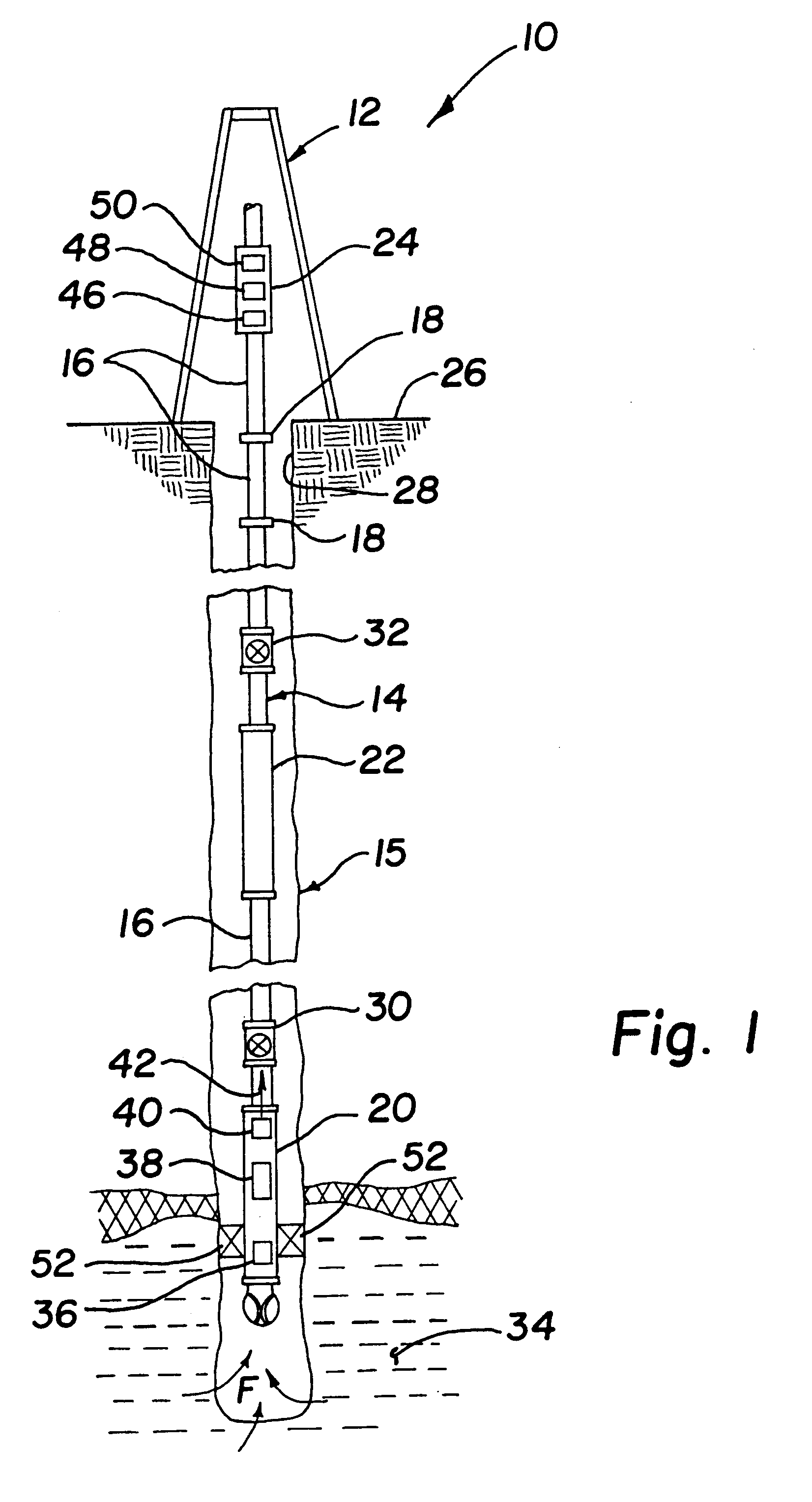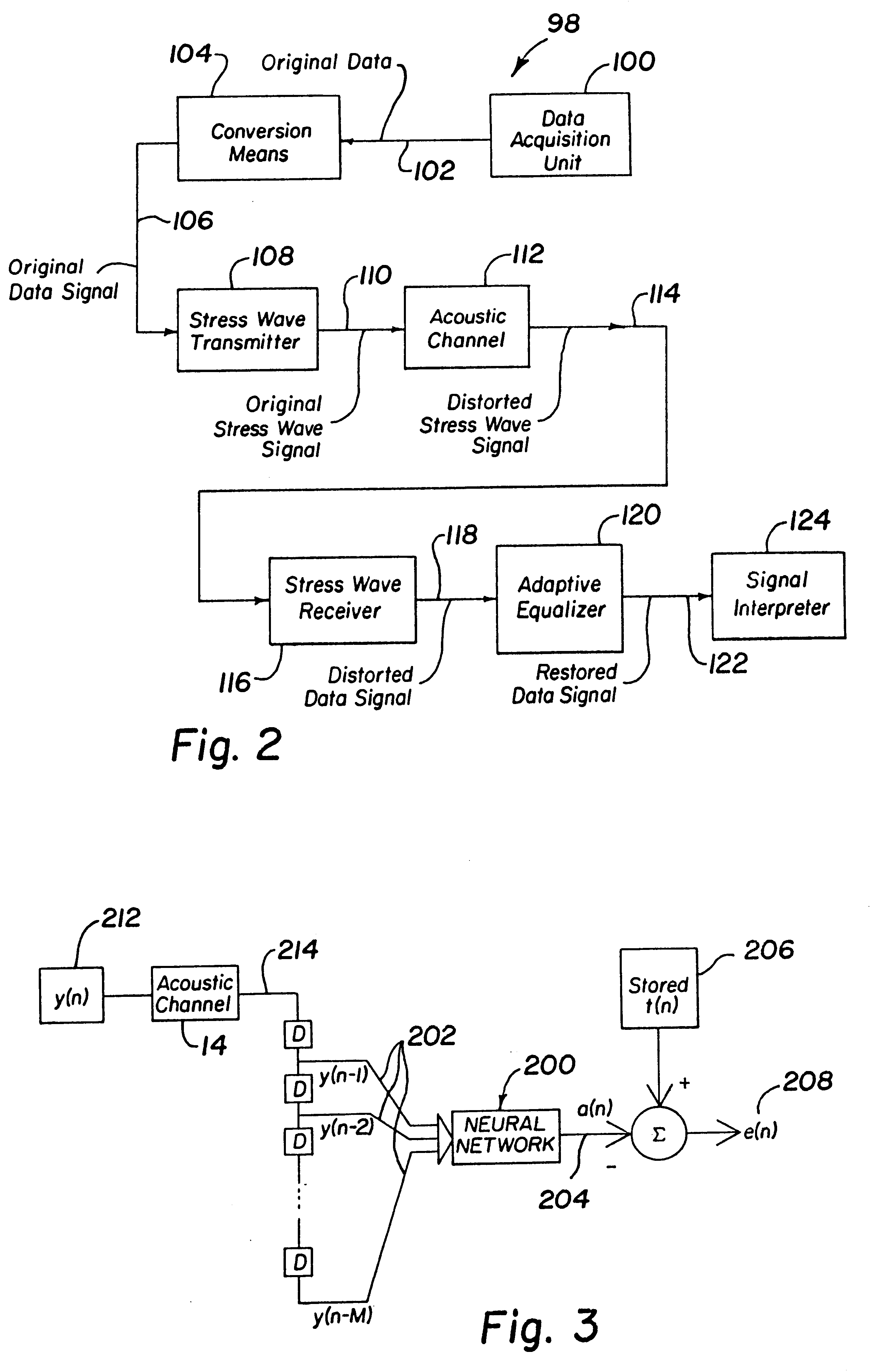Adaptive acoustic channel equalizer & tuning method
a technology of acoustic channel equalizer and tuning method, which is applied in the direction of instruments, surveyors, borehole/well accessories, etc., can solve the problems of significant attenuation and interference, significant signal distortion, and reduce the conditions under which acoustic data transmission may be effectively utilized
- Summary
- Abstract
- Description
- Claims
- Application Information
AI Technical Summary
Benefits of technology
Problems solved by technology
Method used
Image
Examples
Embodiment Construction
FIG. 1 is a representational view of a typical downhole drilling apparatus 10. Above ground, a drilling rig 12 operates to support and drive a drill string 14. The drill string, tubing, and the well bore, the entire well itself comprise an acoustic channel 15 through which sound waves are propagated. The drill string 14 is often made up of a plurality of pipe sections 16 connected together by tool joints 18. The drill string 14 is used for operations within a wellbore 28 which may or may not bear casing along portions of its length. Depending on the circumstances at the well site, the drill string 14 may include valves, packers, subs, collars or other upsets. FIG. 1 shows communication units 20, 22 and 24 which may be placed on, in or near the drill string 14, below, at or above the surface 26, as shown. The communication units 20, 22 and 24 may be utilized for transmitting and receiving acoustic signals to and from locations within an oil well.
The signals may correspond to test dat...
PUM
 Login to View More
Login to View More Abstract
Description
Claims
Application Information
 Login to View More
Login to View More - R&D
- Intellectual Property
- Life Sciences
- Materials
- Tech Scout
- Unparalleled Data Quality
- Higher Quality Content
- 60% Fewer Hallucinations
Browse by: Latest US Patents, China's latest patents, Technical Efficacy Thesaurus, Application Domain, Technology Topic, Popular Technical Reports.
© 2025 PatSnap. All rights reserved.Legal|Privacy policy|Modern Slavery Act Transparency Statement|Sitemap|About US| Contact US: help@patsnap.com



